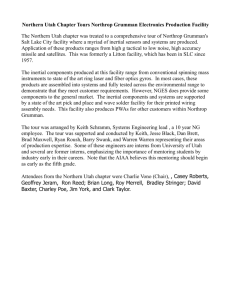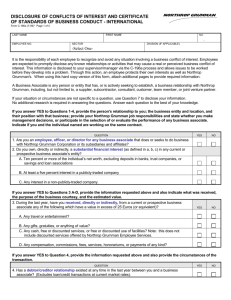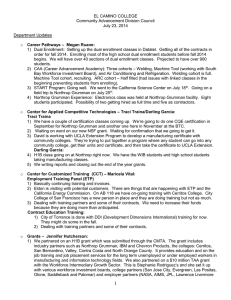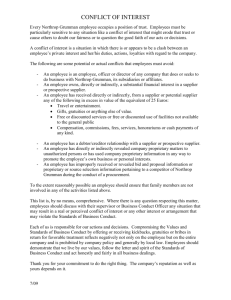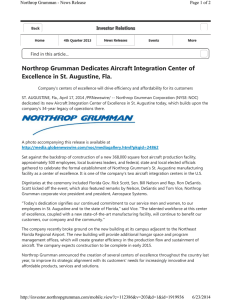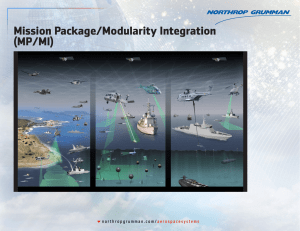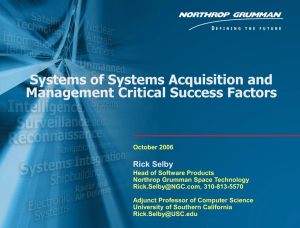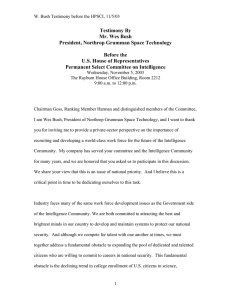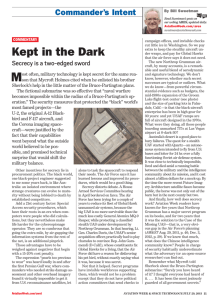here - The George Washington University
advertisement
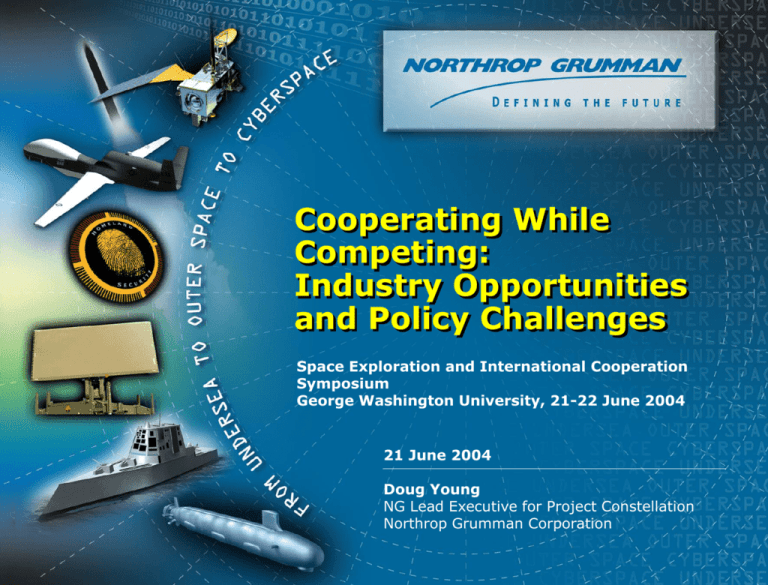
0 Copyright 2004 Northrop Grumman Corporation Cooperating While Competing: Industry Opportunities and Policy Challenges Space Exploration and International Cooperation Symposium George Washington University, 21-22 June 2004 21 June 2004 Doug Young NG Lead Executive for Project Constellation Northrop Grumman Corporation 1 Copyright 2004 Northrop Grumman Corporation International Space Cooperation: U.S. Policy and Practice • International Space Cooperation Is Both Old and New – Established in National Aeronautics and Space Act (1958) – Past: Developing, Launching, and Operating SATCOMM, Scientific, and Earth Sensing Satellites; Apollo-Soyuz, and Educational Projects – Current: International Space Station (ISS), Space Science Programs – New: Human Exploration Programs and Activities • Long-standing Cooperation Themes in National Space Policy – Protecting National Security Interests While Promoting Foreign Policy Considerations – Advancing National Science and Technology Through Cooperation in Basic Scientific Research That, in Turn, Lead to Other Cooperative Undertakings – Maximizing Economic Benefits 2 Copyright 2004 Northrop Grumman Corporation Commission on Moon, Mars, and Beyond: • Related Recommendations: — International Talents and Technologies Will Be of Significant Value in Vision’s Implementation – NASA Should Pursue International Partnerships Based on an Architecture That Would Encourage Global Investment in Support of Vision – NASA Should Consider Establishing Organization to Pursue Cutting-edge Technologies in Private Sector of Relevance to Exploration Encouraging Commercial Activities Through: Prizes Tax Incentives Regulatory Relief, Including Changing Existing Liability Laws to Set a Reasonable Standard for Implied Consent Property Rights in Space 3 Copyright 2004 Northrop Grumman Corporation Opportunities for Firm-to-Firm Collaboration: Criteria for Cooperation • Domestic Interests Criteria – Foreign Policy – National Constraints – International Treaties and Less-formal Agreements – Program Scale, Stability, and Risk – Management Regime of Partnership – Confidence in Partnership • Materials Benefits Criteria – Financial – Industrial Development – Access to Expanded Knowledge and Skills Base – Access to Benefits of Space (Products/services/infrastructure) – Niche Capabilities Source: Fact Sheet on the AIAA International Space Cooperation Workshop Series, 2004. 4 Copyright 2004 Northrop Grumman Corporation Challenges to Firm-to-Firm Collaboration • Legal – U.S. Export Control and Technology Transfer Laws and Regulations – Differing Legal Regimes Among Potential Partners – International Space and Other Treaties • National Interests and Competition – Who’s in Charge? – Who’s Paying for the Activity? – Relationship to Other Foreign Policy Interests? – Relationship to Domestic Interests? • Views Based on Past Experiences – Reliability As Collaborative Partner – Licensing Process and Congressional Oversight, Funding and Resource Management Over Long Term 5 Copyright 2004 Northrop Grumman Corporation To Succeed… Governmental Leadership in Setting Bilateral and Multilateral Framework for Firm-to-firm Cooperation Sustained Government-toGovernment Space Exploration Investment To Foster Cooperation and Competitiveness Easing of Import-Export Regulations Will Stimulate Cooperation and Competition Cooperation Can Accelerate Space Exploration A 45 Year Partner in Mission Success

